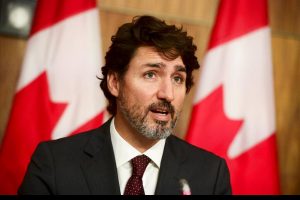In the complex tapestry of global economic dynamics, India finds itself at a crossroads as the murmurs of a delayed rate cut gain momentum. The recent shift in India’s swap rates, signalling a pushback in expectations for rate cuts, has set the stage for a nuanced exploration of the country’s monetary policy landscape. The trajectory of India’s interest rates has long been tethered to interplay between domestic factors and global currents. The hawkish undertones in the latest monetary policy statement by the Reserve Bank of India (RBI) have reverberated through the overnight index swap (OIS) market, revealing a narrative of caution and prudence.
Experts aptly capture the sentiment, noting that the swap market move extrapolates a deferred prospect of rate cuts, possibly not materialising until the third quarter of the next fiscal year. This cautious approach stems from the RBI’s steadfast commitment to achieving the 4 per cent inflation target, with Governor Shaktikanta Das emphasising the challenge of the “last mile” of disinflation. The intricacies of India’s OIS market provide further insights, with ‘paying pressure’ manifesting amidst the unwinding of an earlier ‘received position’ by a large private bank, according to traders.
The one-year swap rising to 6.71 per cent and the five-year climbing to 6.33 per cent signify heightened expectations of sustained or rising interest rates. Such market nuances paint a vivid picture of the deliberations taking place behind the scenes. However, the symphony of India’s monetary policy is not a solo performance. It harmonizes with global melodies, particularly the movements of the Federal Reserve. The delay in the US Fed’s rate cuts has rippled into Indian markets, impacting bets on early easing. The intricately interconnected nature of global economies means that India’s rate cut timeline is not solely determined by domestic factors but is intricately tied to the Federal Reserve’s decisions. Other experts offer a compelling perspective, forecasting the RBI to stay on hold for a more extended period as it cautiously navigates the challenges of disinflation.
Their projection of a change in policy stance to neutral in June and the anticipation of the first rate cut in October echo a sentiment of prudence and a measured approach to economic management. Predictions by a leading private bank add another layer to the narrative, foreseeing the Fed’s easing cycle commencing in June, accompanied by an expectation of a cumulative 100 basis points of cuts. This global context influences their anticipation of a modest 50 basis points rate cut cycle in India.
This view finds resonance among various investors, reflecting a consensus on a tempered approach to rate adjustments. The confluence of factors, from the RBI’s commitment to disinflation to the interplay of global interest rate dynamics, paints a vivid canvas of economic stewardship in uncertain times. India, like a skilled navigator, must judiciously steer its course, mindful of both domestic and international currents, as it charts the path ahead in the intricate world of monetary policy.











